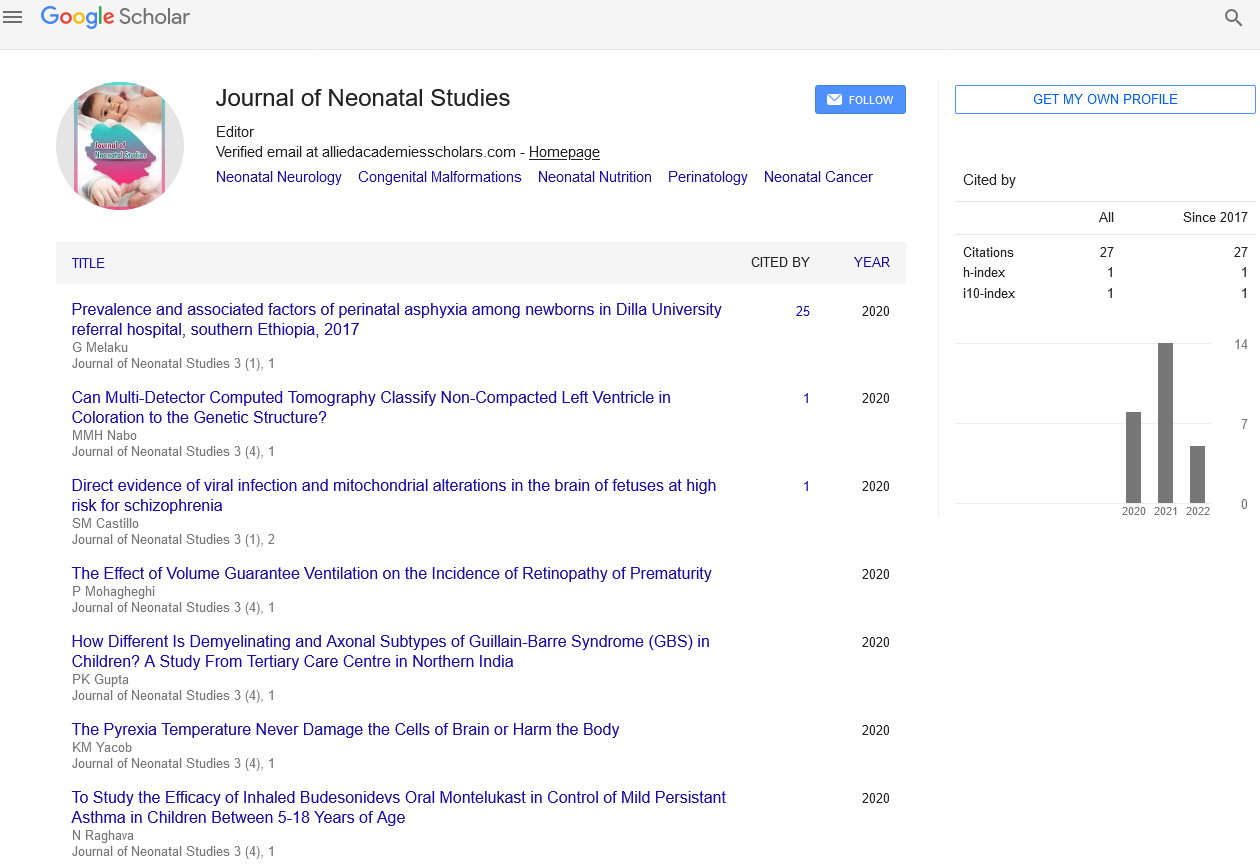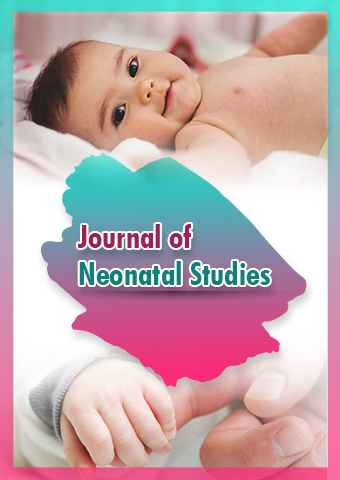Perspective - Journal of Neonatal Studies (2024) Volume 7, Issue 6
Pertussis in Neonates: Understanding the Risks, Symptoms, and Prevention
- Corresponding Author:
- Marjani Eshe
Department of Neonatal Surgery, Santé Medical College, Ethiopia
E-mail: meshe028@santemc.edu
Received: 04-Nov-2024, Manuscript No. JNS-24-150541; Editor assigned: 06-Nov-2024, PreQC No. JNS-24-150541 (PQ); Reviewed: 20-Nov-2024, QC No. JNS-24-150541; Revised: 24-Dec-2024, Manuscript No. JNS-24-150541 (R); Published: 31-Dec-2024, DOI: 10.37532/JNS.2024.7(6).300-301
Introduction
Pertussis, commonly known as whooping cough, is a highly contagious respiratory infection caused by the bacterium Bordetella pertussis. While it can affect individuals of all ages, neonates (infants under 6 months of age) are particularly vulnerable to severe complications. This article delves into the risks, symptoms, diagnosis, treatment, and prevention of pertussis in neonates, providing a comprehensive overview for parents, caregivers, and healthcare professionals.
Description
Risks and vulnerability
Neonates are at the highest risk of severe pertussis infection due to their immature immune systems. The infection can lead to serious complications such as apnea (temporary cessation of breathing), pneumonia, seizures, and even death. Infants who contract pertussis are often infected by close contacts, including family members who may not even realize they are carrying the bacteria.
Symptoms of pertussis in neonates
The symptoms of pertussis in neonates can be divided into three stages: The catarrhal stage, the paroxysmal stage, and the convalescent stage.
Catarrhal stage: This initial stage resembles a common cold, with symptoms such as mild cough, runny nose, and low-grade fever. This stage typically lasts 1-2 weeks and is often when the infection is most contagious.
Paroxysmal stage: This stage is characterized by severe and prolonged coughing spells, often ending in a “whooping” sound as the infant struggles to breathe. These coughing spells can be so intense that they cause the infant to turn red or blue from lack of oxygen, and may be followed by vomiting or gagging.
Convalescent stage: The final stage is a gradual recovery phase where the coughing spells become less frequent and less severe. However, the cough can persist for several weeks or even months.
Diagnosis of pertussis in neonates
Diagnosing pertussis in neonates can be challenging due to the nonspecific nature of early symptoms. Healthcare providers typically rely on a combination of clinical history, physical examination, and laboratory tests to confirm the diagnosis. The preferred diagnostic test is a Polymerase Chain Reaction (PCR) test using a nasopharyngeal swab, which can detect the presence of Bordetella pertussis DNA.
Treatment of pertussis in neonates
Early diagnosis and treatment are crucial for managing pertussis in neonates. Antibiotic therapy is the primary treatment and can help reduce the severity and duration of symptoms, as well as prevent the spread of the infection. Commonly prescribed antibiotics include azithromycin, clarithromycin, and trimethoprim-sulfamethoxazole. In severe cases, hospitalization may be necessary to provide supportive care, such as oxygen therapy and monitoring for complications.
Prevention of pertussis in neonates
Preventing pertussis in neonates involves a combination of vaccination and public health measures:
Pertussis vaccination: The primary method of preventing pertussis is vaccination. Pregnant women are recommended to receive the Tdap (tetanus, diphtheria, and acellular pertussis) vaccine between 27 and 36 weeks of gestation to provide passive immunity to the newborn. Infants should receive the DTaP (Diphtheria, Tetanus, and acellular Pertussis) vaccine according to the recommended immunization schedule.
Cocooning strategy: This strategy involves vaccinating all close contacts of the newborn, including parents, siblings, and caregivers, to create a “cocoon” of protection around the infant. Although recent evidence suggests that vaccinated individuals can still contract and transmit pertussis, vaccination remains a critical component of prevention.
Public health measures: Public health authorities play a vital role in monitoring and controlling pertussis outbreaks. Infected individuals should be isolated, and household contacts should receive prophylactic antibiotics to prevent further spread. Public awareness campaigns can also help educate the community about the importance of vaccination and early treatment.
Case studies and success stories
Several case studies highlight the importance of early diagnosis and treatment in managing pertussis in neonates:
Case study 1: A 2-month-old infant presented with severe coughing spells and episodes of apnea. The healthcare provider promptly initiated antibiotic therapy and provided supportive care in the hospital. The infant responded well to treatment and was discharged after a few days of observation.
Case study 2: A newborn was diagnosed with pertussis after being exposed to an infected family member. The infant received the Tdap vaccine as a precautionary measure, and close monitoring was conducted to ensure early detection of any symptoms. The baby remained healthy and did not develop severe complications.
Case study 3: A premature infant in the NICU developed pertussis despite receiving the Tdap vaccine. The healthcare team implemented strict infection control measures and provided aggressive antibiotic therapy. The infant’s condition improved, and the infection was successfully managed without long-term complications.
Research and future directions
Ongoing research in pertussis continues to explore new strategies for prevention and treatment. Some areas of focus include:
Improved vaccines: Developing more effective vaccines that provide longer-lasting immunity and better protection for neonates.
Antibiotic resistance: Investigating the emergence of antibiotic-resistant strains of Bordetella pertussis and developing alternative treatment options.
Public health interventions: Enhancing public health interventions to increase vaccination rates and reduce the incidence of pertussis outbreaks.
Maternal immunization: Studying the impact of maternal immunization on neonatal pertussis and identifying optimal timing and dosing strategies.
Conclusion
Pertussis is a serious infection that poses significant risks to neonates. Early diagnosis, prompt treatment, and preventive measures such as vaccination and public health interventions are essential for protecting this vulnerable population. By understanding the risks, symptoms, and prevention strategies, parents, caregivers, and healthcare professionals can work together to ensure the health and well-being of neonates.

